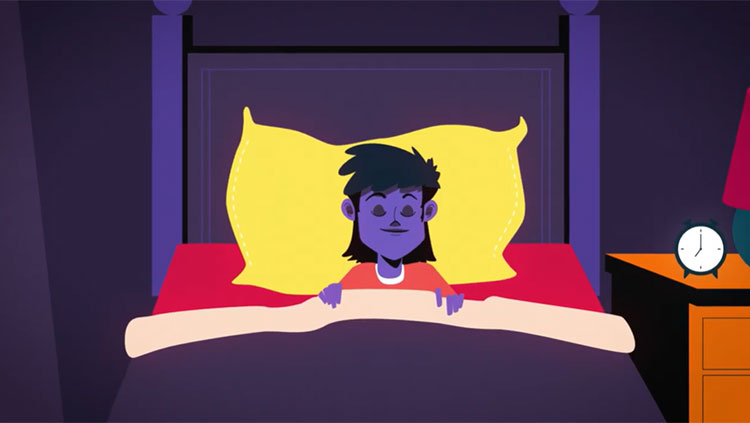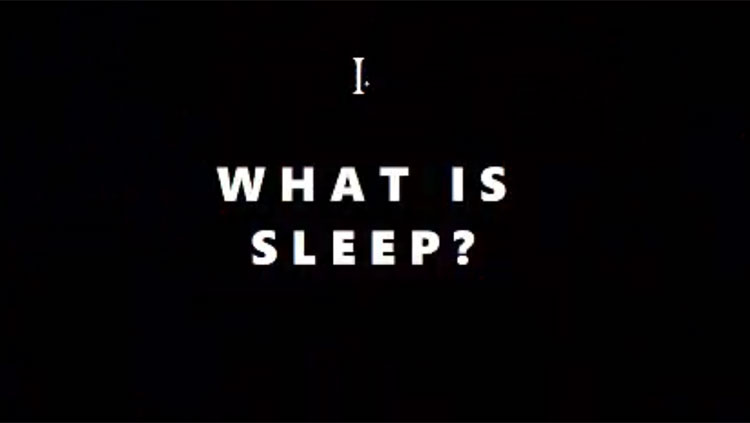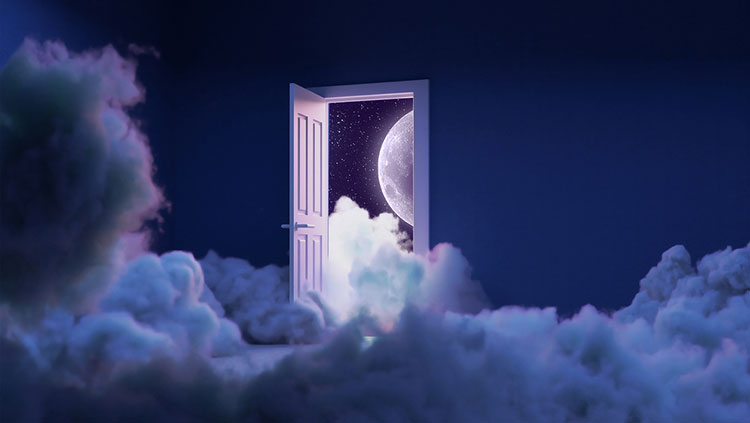Sleep Paralysis: The Night Hag
- Published2 Oct 2019
- Source BrainFacts/SfN
After finally falling asleep one night, young Syed experiences a strange hallucination: a shadowy figure moving toward him. He wants to scream or get away, but he is paralyzed. His terrifying experience is not paranormal activity but a common neurological phenomenon.
This video is from the 2019 Brain Awareness Video Contest.
CONTENT PROVIDED BY
BrainFacts/SfN
Transcript
This here is Syed. After a long day of studying for a high school test, Syed finally goes to bed the next night on time. Early the next morning he wakes up to his dark room. Suddenly, he sees a large shadow in the corner of his room slowly approaching his bed. He becomes terrified and tries to scream and get out of his bed, but he can’t move an inch or say a word. The shadow is now on him and Syed feels like he is suffocating.
Syed tries to scream, “I love you mom,” before his demise but nothing comes out. Then, Syed wakes up to his room in a pool of sweat. He is able to move again and sits up. Syed can’t believe what he just saw was a dream because his room was exactly the same in his dream. He thinks he’s going crazy and wants to know if anything is wrong with him.
So, he looks up his sleep symptoms and finds the phenomenon he experienced was called sleep paralysis. He becomes scared by several historical accounts of the phenomenon online. The earliest clinical description dates back to a 1664 Dutch physician’s collection of case histories.
One case describes a woman who believed the devil lay upon her and held her down, sometimes that she was choked by a great dog, or thief lying upon her breast so that she could hardly speak or breathe, and when she tried to throw them off she was unable to move her body.
He decides he wants a more scientific answer, and so he goes to his doctor. After explaining his paranormal activity, his doctor reassures him that what he experienced was perfectly normal, especially for people at his age. Sleep paralysis is a temporary inability to move or speak while falling asleep or upon waking.
The doctor tells him that sleep paralysis usually occurs when one wakes up from rapid eye movement, or REM, sleep. This sleep stage involves dreaming, the paralysis of muscles, and, you guessed it, rapid eye movement. The doctor mentions that this occurs in the region of the brain called the sub-lateral dorsal nucleus located in the pons.
In the case of sleep paralysis, the temporoparietal junction, which is critical in distinguishing oneself from their surroundings, is disrupted with the activation of GABA and glycine receptors. GABA and glycine inhibit this function by hyperpolarizing neurons through ion movement and not allowing them to fire.
As one is woken up, the muscles are still paralyzed from REM sleep, not allowing them to move. During this time, hallucinations occur due to the activation of serotonin receptors. As one realizes they are experiencing REM paralysis, the motor cortex sends signals to the body to overcome the paralysis and end the atonia.
The doctor relieves Syed by telling him that he will outgrow the condition and that basic treatments include reassurance from family members. Moreover, his condition isn’t bad enough to require drugs such as pimavanserin to prevent hallucinations.

















